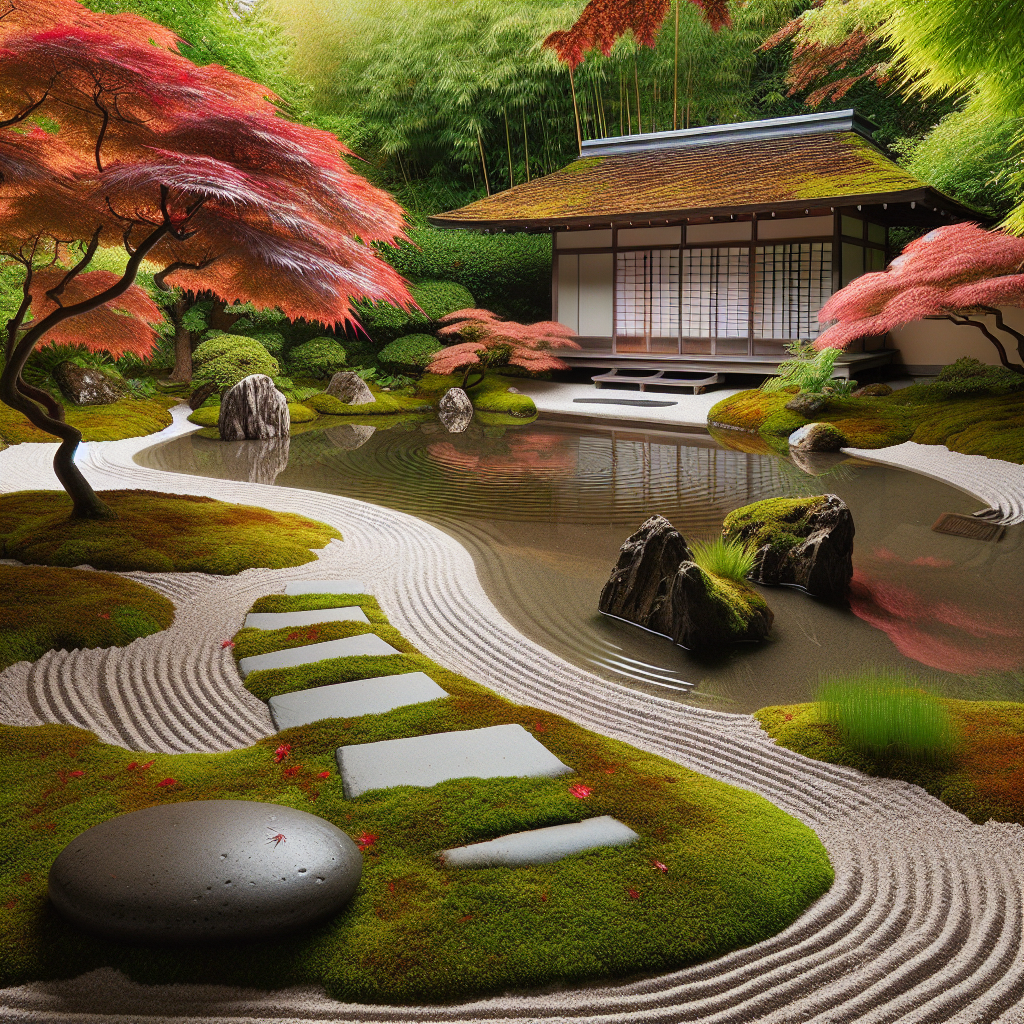Zen Garden Creation for a Tranquil Outdoor Retreat
Creating a Zen garden is a wonderful way to transform your outdoor space into a tranquil retreat. With its minimalist design and focus on natural elements, a Zen garden can provide a sense of calm and serenity in your own backyard. In this comprehensive guide, we will walk you through the step-by-step process of creating your own Zen garden, from selecting the perfect location to adding the final finishing touches. So, let’s get started on this DIY project that will bring peace and tranquility to your outdoor space.
Step 1: Choosing the Right Location
The first step in creating your Zen garden is to choose the perfect location. Look for an area in your yard that is relatively flat and receives a good amount of sunlight. Ideally, the location should be away from noisy areas and provide a sense of privacy. Take some time to visualize how the garden will fit into the overall layout of your outdoor space.
Once you have selected the location, mark out the boundaries of your Zen garden using stakes and string. This will give you a clear idea of the size and shape of the garden.
Step 2: Clearing the Area
Before you can start creating your Zen garden, you need to clear the area of any existing vegetation or debris. Remove any grass, weeds, or rocks from the designated space. Use a shovel or a garden rake to level the ground and create a smooth surface.
Once the area is cleared, lay down a weed barrier fabric to prevent any unwanted growth in your Zen garden. This will help maintain the clean and minimalist look of the space.
Step 3: Selecting the Materials
Now it’s time to choose the materials for your Zen garden. The key elements of a Zen garden include gravel or sand, rocks, and plants. Here are some options to consider:
- Gravel or Sand: Select a fine-grained gravel or sand in a natural color, such as beige or gray. This will serve as the base of your Zen garden and create a calming and meditative atmosphere.
- Rocks: Choose a variety of rocks in different shapes and sizes. Look for rocks with interesting textures and colors. Arrange them in a way that mimics the natural flow of a river or stream.
- Plants: Opt for low-maintenance plants that thrive in your climate. Japanese maple trees, bamboo, and moss are popular choices for Zen gardens. These plants will add a touch of greenery and create a sense of harmony with nature.
Step 4: Creating the Layout
Now that you have gathered all the necessary materials, it’s time to create the layout of your Zen garden. Start by spreading the gravel or sand evenly across the designated area. Use a rake or a garden trowel to create patterns or ripples in the surface, resembling the flow of water.
Next, strategically place the rocks in your Zen garden. Arrange them in a way that is visually pleasing and creates a sense of balance. Consider using odd numbers of rocks, as this is believed to bring good luck and positive energy.
Finally, add the plants to your Zen garden. Place them strategically around the rocks and gravel, creating a harmonious and natural composition. Be mindful of the size and growth habits of the plants, ensuring they will not overshadow or overcrowd the space.
Step 5: Adding the Final Touches
With the layout complete, it’s time to add the final touches to your Zen garden. Here are some ideas to enhance the overall aesthetic and create a truly tranquil retreat:
- Pathways: Create pathways using stepping stones or gravel to guide visitors through your Zen garden. This will add a sense of movement and invite exploration.
- Water Feature: Consider adding a small water feature, such as a bamboo fountain or a stone basin. The sound of flowing water will further enhance the peaceful ambiance of your Zen garden.
- Seating Area: Create a cozy seating area where you can relax and enjoy the serenity of your Zen garden. Use comfortable cushions or benches made from natural materials.
- Decorative Elements: Add decorative elements, such as lanterns, statues, or wind chimes, to personalize your Zen garden and infuse it with your own sense of style.
Step 6: Maintenance and Care
Once your Zen garden is complete, it’s important to maintain and care for it to ensure its longevity and beauty. Here are some tips to keep in mind:
- Weeding: Regularly inspect your Zen garden for any weeds or unwanted growth. Remove them promptly to maintain the clean and minimalist look.
- Raking: Use a rake to smooth out the gravel or sand surface and create fresh patterns. This will help maintain the meditative atmosphere of your Zen garden.
- Pruning: Trim and prune the plants in your Zen garden as needed to keep them healthy and in shape. Remove any dead or diseased branches to maintain the overall aesthetic.
- Cleaning: Occasionally clean the rocks and decorative elements in your Zen garden to remove any dirt or debris. This will keep them looking fresh and vibrant.
Conclusion
Creating a Zen garden is a rewarding DIY project that can transform your outdoor space into a tranquil retreat. By following the step-by-step instructions outlined in this guide, you can create a Zen garden that brings peace and serenity to your everyday life. Remember to choose the right location, select the materials carefully, create a harmonious layout, and add the final touches that reflect your personal style. With proper maintenance and care, your Zen garden will continue to provide a peaceful oasis for years to come. So, roll up your sleeves and embark on this DIY journey to create your own Zen garden today!






